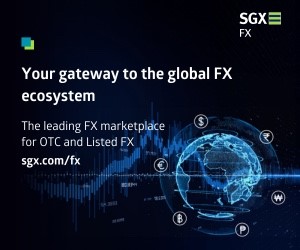The Last Look…
Posted by Colin Lambert. Last updated: August 29, 2023
I’ll keep this quick – the northern hemisphere is facing public holidays in the UK and US after all – what is it with people that think they can a) get away with spoofing in markets; and b) do so on a regulated exchange with one market place?
Last week, CME issued disciplinary notices against two traders for spoofing, one of them in FX, hence how it attracted my attention. Those who go through our newsletter will no doubt appreciate the irony, that these two notices were issued the same week as two former precious metals traders were handed jail sentences for the exact same action – indeed on CME-owned venues!
This begs the question, are these people arrogant or just dumb? How many spoofing cases need to be prosecuted before people actually realise they are going to get caught? It’s one thing sitting on a desk in 2008 thinking you will get away with it, the practice was hardly noticed back then and surveillance procedures (and technology) were rudimentary at best – 15 years on? It’s a very different matter.
The FX case handled by CME last week saw the spoofer earn just over $1400 from his activities, for which he was fined $55,000 and banned from CME trading venues for five years. Another great trade on his part!
There is not a great deal the industry can do about stopping people determined in their attempts to spoof the market beyond publicising penalties as and when they are handed down. CME clearly has an excellent surveillance programme in operation because it does catch these people – perhaps that needs to be more heavily publicised?
Perhaps people think that by keeping their actions low key, aimed at making small amounts of money, they won’t get noticed? The essence of spoofing, however, in the modern sense at least, is exactly that – make lots of small amounts of money.
If they really didn’t want to get noticed – and here we step into tricky territory – surely they should be doing so in OTC markets where clearly their activities can’t be tracked as easily? Of course, most of these spoofers caught by the exchanges are individual traders who couldn’t get the “entrance money” to get on a major OTC platform – they would also find the size of the market somewhat intimidating as well, and that is what puzzles me about this whole thing. CME, in a non-roll month, does in excess of $80 billion per day in FX futures and options, are these people placing orders large enough to worry traders and trick them into falling for the spoof? Part of me wants there to be a programme in the surveillance that, once it has identified the spoofing activity, slams the big bid/offer, just to put the wind up the spoofer, but that’s just the old, embittered, trader in me!
More seriously, it highlights the difference between exchange-traded and OTC FX venues. The amounts traded are often the same, and the overall volumes are also similar, but clearly, when it comes to the make-up of participants, there are still large differences. It also highlights that one of the downsides of the collapse in average trade sizes is that the bigger players, who used to indirectly self-regulate this type of behaviour, are no longer able, or willing, to do so. After all, if they could, then that spoof bid or offer would be getting slammed.



